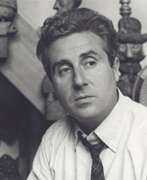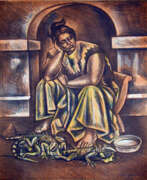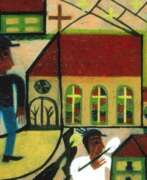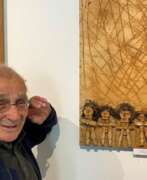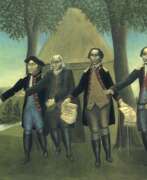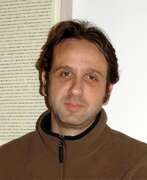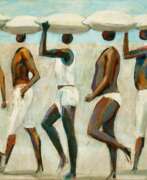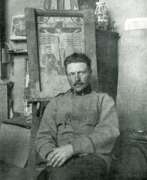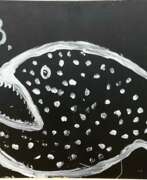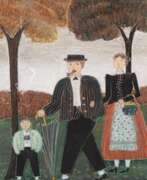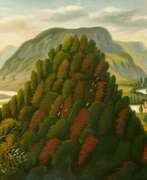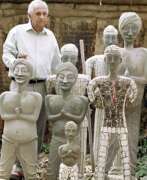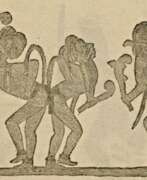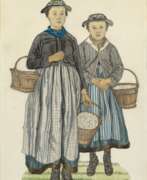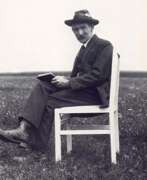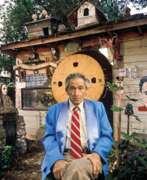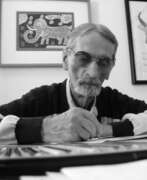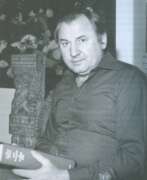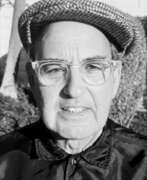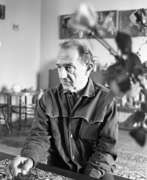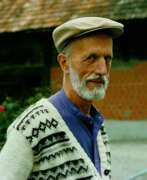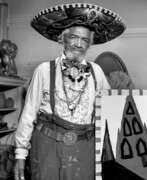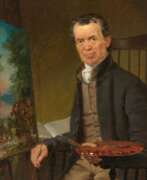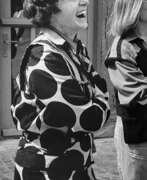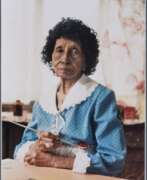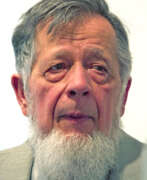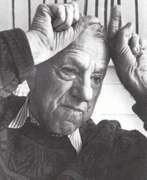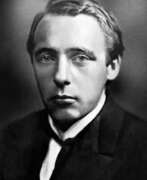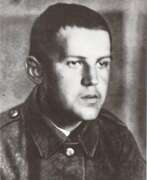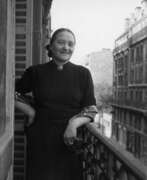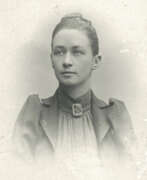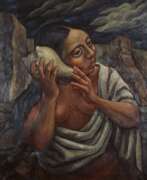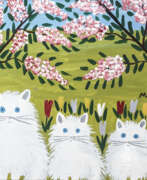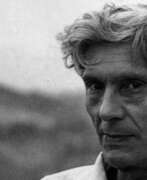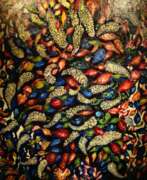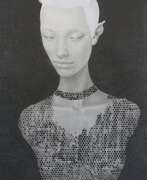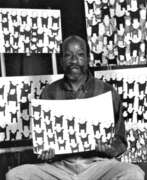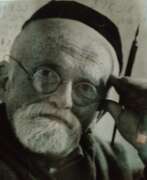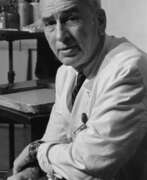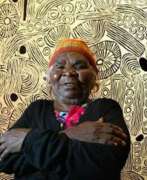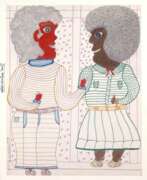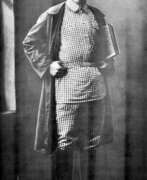Artists Primitivism
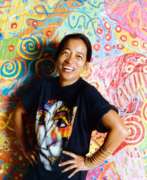

Pacita Abad was a renowned Filipino artist, celebrated for her vibrant and colorful artwork that showcased her deep engagement with global cultures and social issues. Born in 1946 in Batanes, Philippines, into a politically active family, Abad's life took a significant turn when she decided to abandon her law studies in favor of art, influenced by her interactions and travels across the globe. This decision led her to explore various art forms and techniques, including trapunto painting—a method where canvases are stitched and padded to create a three-dimensional effect.
Abad's art was profoundly influenced by her extensive travels with her husband, Jack Garrity, through more than 60 countries, where she not only collected textiles but also immersed herself in local cultures. This exposure is vividly reflected in her works, which often incorporate traditional fabrics and objects, such as beads and shells, integrating them into her colorful abstract and figurative paintings.
Throughout her career, Abad's works were displayed in over 200 museums and galleries worldwide, including prestigious venues like Tate Modern and the Museum of Modern Art (MoMA) PS1. Her work not only celebrates the visual and cultural diversity she encountered but also addresses global and humanitarian issues, such as the plight of refugees, which she depicted through intimate and powerful portraits of women and children.
Pacita Abad's legacy continues to inspire and influence the art world, highlighting her role as an "ambassador of colors" whose works helped to "make the world smile" with their exuberance and vibrancy. If you're interested in learning more about her life and work, consider signing up for updates on exhibitions and sales related to her art. This will keep you informed about opportunities to engage with and perhaps collect pieces from the oeuvre of this groundbreaking artist.


Vladimir Ivanovich Akulov (Russian: Владимир Иванович Акулов) is a Soviet and contemporary Belarusian artist. He is known as a painter, graphic artist and teacher, a representative of the second wave of Belarusian avant-garde.
Vladimir Akulov in his work has developed a unique style under the influence of expressionism, cubism, primitivism, fauvism. He is a master of portrait, landscape, still life, compositions with symbolic and allegorical subjects, illustrations of literary works. During his career the artist created several cycles of portraits, including those of famous people.


Roby Dwi Antono is a visual artist mainly creating surrealistic paintings as well as sculptures and prints. His work opens a portal to another universe where spaceships, aliens, dinosaurs and creatures with humanly features come together. These surrealistic creations that once lived only in Dwi Antono’s imagination come to life in a new realm on his canvas. Inspired by his childhood memories and love for Fiction movies, his paintings are left for the viewer to interpret.
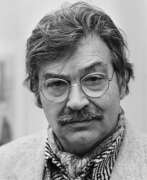

Christiaan Karel Appel was a Dutch painter, sculptor, and poet. He started painting at the age of fourteen and studied at the Rijksakademie in Amsterdam in the 1940s. He was one of the founders of the avant-garde movement CoBrA in 1948. He was also an avid sculptor and has had works featured in MoMA and other museums worldwide.
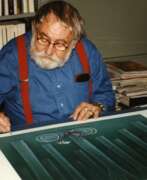

Jan Balet was a German/US-American painter, graphic artist and illustrator. Affected by the style naive art he worked particularly as a graphic artist and as an Illustrator of children's books. Besides this he painted pictures in the style of naive art. Referred to as a "naïve" painter, his works exhibit a dry wit and refreshingly candid, satirical view of life.
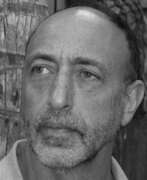

Roger Ballen is an American and South African photographer who lives and works in Johannesburg.
Roger Ballen studied psychology at the University of California, Berkeley, and this specialty helps him to better comprehend and study the world around him. Travels around the world brought him to South Africa, which has become his new home.
Ballen is one of the latest photographers to shoot exclusively in black and white, approaching forms of minimalism.
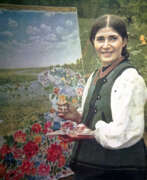

Kateryna Vasilyevna Belokur (Russian: Екатерина Васильевна Белокур) was a Ukrainian Soviet artist of the mid-twentieth century. She is known as a master of folk decorative painting.
Kateryna Belokur was self-taught and became famous for her colorful paintings, mostly depicting flowers, landscapes, and portraits. Her work often included a combination of spring and fall elements, and she could take weeks to create even small details on canvas. Catherine also made her own brushes, selecting hairs from cattails, and used a separate brush for each paint. Her work was characterized by vibrant colors and style.


Camille Bombois was a French painter known for his colorful depictions of rural life and everyday scenes.
Bombois began painting as a hobby, but his talent was quickly recognized, and he soon became a professional artist. He was largely self-taught and developed his own unique style, characterized by bold, bright colors and a loose, expressive brushwork.
Bombois was influenced by the Fauvist movement, which was known for its use of vibrant colors and bold, simplified forms. He also drew inspiration from the rustic landscapes and working-class people he encountered in his daily life.
Bombois's paintings often depicted scenes of rural life. He also painted portraits and still lifes.
Bombois exhibited his work at the Salon d'Automne and the Salon des Indépendants in Paris, and his work was well-received by critics and collectors. He was awarded the Legion of Honor in 1953.
Bombois continued to paint throughout his life, and his work is held in many major collections, including the Musée d'Orsay in Paris and the Hermitage Museum in St. Petersburg, Russia.
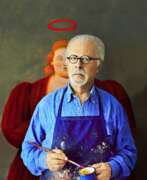

Fernando Botero Angulo was a Colombian painter and sculptor, celebrated for his volumetric stylization of figures and objects in his works. Born in Medellín, Colombia, Botero's signature style, known as "Boterismo", portrays people and animals in exaggerated and inflated shapes, often conveying social criticism or humor.
Fernando Botero's journey into the art world was marked by his early rejection of traditional artistic paths, opting instead to explore an innovative style that would later dominate his career. His art, infused with a mix of political satire and playful humor, has graced numerous galleries and public spaces worldwide. Notable public installations include his sculptures in Park Avenue, New York City, and the Champs-Élysées in Paris. His works are in the collections of many major international museums and have fetched high sums at auctions.
Fernando Botero's ability to capture the human condition through rounded, corpulent figures has endeared him to a global audience. His notable works such as "The Presidential Family" and "The Death of Pablo Escobar" are poignant commentaries on Colombian politics and society. Furthermore, Botero donated significant numbers of his works to Colombian museums, enriching the cultural heritage of his native country.
His influence extends beyond paintings and sculptures, as Fernando Botero has also engaged with social issues through his art. His series on Abu Ghraib prison abuses reflects his commitment to human rights and his capacity to address painful subjects through his distinct aesthetic.
For those interested in the vibrant world of art and culture, Botero's work remains a testament to the power of visual satire and cultural commentary. To stay updated on exhibitions and auctions featuring Fernando Botero’s works, sign up for alerts and dive deeper into the rich legacy of this monumental artist.
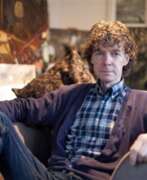

Gary Bunt is a British self-taught artist known for his paintings of the English suburbs and countryside. He took up art to overcome a serious illness. Gary Bunt in a primitive style, with sophisticated simplicity and good humor depicts ordinary life with its simple joys.
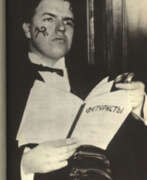

David Davidovich Burliuk (Russian: Давид Давидович Бурлюк), a pioneering figure of the Russian Futurist movement, was a Ukrainian poet, artist, and publicist, born in 1882 in Semirotovshchina, Kharkov, Ukraine, and died in 1967 on Long Island, N.Y., U.S. Known for his eclectic contributions that spanned poetry, painting, criticism, and publishing, Burliuk's work was instrumental in introducing the Russian avant-garde to Europe and the United States. Despite having a lesser volume of work in poetry and painting compared to his contemporaries, Burliuk's knack for discovering talent and promoting it was unparalleled. He was among the first to publish the works of Velimir Khlebnikov and to recognize the genius of Vladimir Mayakovsky, significantly contributing to their renown.
Burliuk's artistic journey was marked by his involvement with the Futurist and Neo-Primitivist movements. His early work, including an exhibition with the group Zveno ("The Link") in Kiev in 1908 and his participation in the Hylaea group, set the stage for his later achievements. He was a co-author of the influential Futurist manifesto "A Slap in the Face of Public Taste" in 1912, advocating for a break from traditional art forms and the embrace of modernity. Burliuk's commitment to Futurism was evident in his publishing endeavors and his collaborations with notable artists of the time.
In his later years, after emigrating to the United States in 1922, Burliuk continued to engage with the art world, contributing to pro-Soviet groups and publishing his works and those of his contemporaries. His efforts were recognized in several exhibitions, including a significant show at the Brooklyn Museum's 1926 International Exhibition of Modern Art. Despite facing challenges, such as being denied permission to visit his homeland by the Soviet government, Burliuk's influence remained steadfast. His legacy as a central figure in Russian Futurism and his contributions to the broader art movement are celebrated to this day.
To stay informed about updates and events related to David Davidovich Burliuk, including sales of his works and auction events, sign up for our newsletter. This subscription will ensure you're the first to know about new discoveries and opportunities to engage with Burliuk's enduring legacy.
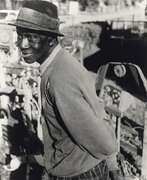

David Butler was an African American sculptor and painter from Good Hope, Louisiana. His style is epitomized by kinetic sculptures made from recycled tin or wood, which he embellished with saturated colors and geometric patterns. His work is now in the permanent collections of the Smithsonian American Art Museum, the American Folk Art Museum, and the Philadelphia Museum of Art.


James Castle was an American artist born in Garden Valley, Idaho. Although Castle did not know about the art world outside of his small community, his work ran parallel to the development of 20th-century art history. His works have been collected by major institutions. The Philadelphia Museum of Art organized a retrospective of Castle's work which toured nationally in 2008-09. Castle's work entered the international arena with a major exhibition in Madrid, Spain at the Museo Nacional Centro de Arte Reina Sofía in 2011 and was included in the 2013 Venice Biennale exhibition The Encyclopedic Palace. In 2014 The Smithsonian American Art Museum featured their recent acquisition in the exhibition Untitled: The Art of James Castle and the Whitney Museum of American Art included their acquired collection of Castle's work in the 2017 exhibition Where We Are.
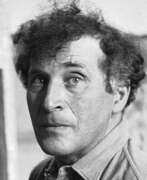

Marc Chagall (Russian: Марк Заха́рович Шага́л), born Moishe Shagal in 1887 near Vitebsk, Belarus (then part of the Russian Empire), was a Belarusian and French artist celebrated for his pivotal role in the avant-garde movement and his unique integration of Eastern European Jewish culture into modern art. His contributions spanned several artistic formats including painting, stained glass, stage sets, ceramics, tapestries, and fine art prints. Chagall's early modernist tendencies were enriched by his experiences across Saint Petersburg, Paris, and Berlin before World War I, leading to a distinctive style that melded Cubism, Symbolism, and Fauvism with his Jewish heritage.
Chagall's work is recognized for its emotional depth, often exploring themes of love, memory, and Jewish folklore through vibrant colors and dreamlike imagery. Notably, art critic Robert Hughes described him as "the quintessential Jewish artist of the twentieth century," a sentiment echoed by art historian Michael J. Lewis who regarded Chagall as a significant figure within European modernism and as the world's preeminent Jewish artist of his time.
Among Chagall's famed contributions are his stained-glass windows for the cathedrals of Reims and Metz, the UN, and the Jerusalem Windows in Israel. His monumental paintings include parts of the ceiling of the Paris Opéra and works that explore biblical themes, a hallmark of his oeuvre that underscores his enduring engagement with spiritual and religious motifs.
For art collectors and antiques experts, Chagall's works are notable not only for their artistic innovation but also for their rich cultural and historical significance. His art is housed in many prestigious museums worldwide, including the Marc Chagall National Museum in Nice, France, which focuses on his works inspired by religion and houses the series of paintings illustrating the biblical message.
For those interested in exploring Chagall's legacy and the vibrant intersection of culture, art, and history his work represents, signing up for updates on new product sales and auction events related to Marc Chagall can provide invaluable insights and opportunities. This is an invitation to engage more deeply with the world of art and culture that Chagall so uniquely encapsulated in his work.
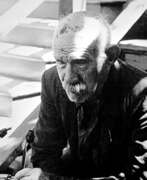

Henry Joseph Darger was an American writer, novelist and artist who worked as a hospital custodian in Chicago, Illinois. He has become famous for his posthumously discovered 15.145-page fantasy novel manuscript called The Story of the Vivian Girls, in What Is Known as the Realms of the Unreal, of the Glandeco-Angelinian War Storm, Caused by the Child Slave Rebellion, along with several hundred drawings and watercolor illustrations for the story.
The visual subject matter of his work ranges from idyllic scenes in Edwardian interiors and tranquil flowered landscapes populated by children and fantastic creatures, to scenes of horrific terror and carnage depicting young children being tortured and massacred. Much of his artwork is mixed media with collage elements. Darger's artwork has become one of the most celebrated examples of outsider art.
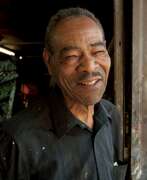

Thornton Dial was a pioneering American artist who came to prominence in the late 1980s. Dial's body of work exhibits formal variety through expressive, densely composed assemblages of found materials, often executed on a monumental scale. His range of subjects embraces a broad sweep of history, from human rights to natural disasters and current events. Dial's works are widely held in American museums; ten of Dial's works were acquired by the Metropolitan Museum of Art in 2014.
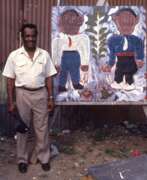

Arthur Dial is an American painter and sculptor living and working in Bessemer, Alabama. He is a part of the Dial family of artists, which include his older brother, Thornton Dial, and his nephews, Thornton Dial Jr., Richard Dial, and Ronald Lockett.
Dial created reliefs and paintings that narrowed in on a specific moment within the broader narrative that he wished to convey. He uses these moments, such as Eve reaching for the forbidden fruit or "George Wallace blockading the entrance to the University of Alabama in Montgomery," to highlight historical or folkloric moments of extreme tension. Dial's focus on scenes of conflict in humanity's real or imagined history come from his direct observation of southern life throughout the 20th century. He describes his narratives as "a record of what went by".
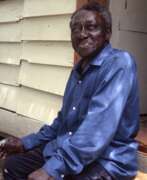

Thomas "Sam" Doyle was an African-American artist from Saint Helena Island, South Carolina. His colorful paintings on sheet metal and wood recorded the history and people of St. Helena’s Gullah community.
Doyle's paintings and sculptures are held in the permanent collections of American Folk Art Museum, the High Museum of Art, the Smithsonian American Art Museum, the Gibbes Museum of Art and the Los Angeles County Museum of Art and Penn Center (Penn School on St. Helena Island).


Marcel Dzama is a contemporary artist from Winnipeg, Manitoba, Canada who currently lives and works in New York City. His work has been exhibited internationally, in particular his ink and watercolor drawings. Dzama works extensively in sculpture, painting, collage, and film. The artist is also known for his intricate dioramas and large scale polyptychs that draw from his talents across a range of media. Dzama works in multiple disciplines to bring his cast of human figures, animals, and imaginary hybrids to life, and has developed an international reputation and following for his art that depicts fanciful, anachronistic worlds.
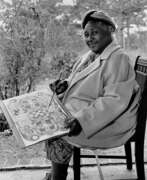

Minnie Eva Evans was an African American artist who worked in the United States from the 1940s to the 1980s. Evans used different types of media in her work such as oils and graphite, but started with using wax and crayon. She was inspired to start drawing due to visions and dreams that she had all throughout her life, starting when she was a young girl. She is known as a southern folk artist and outsider artist as well as a surrealist and visionary artist.
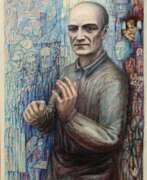

Pavel Nikolayevich Filonov (Russian: Павел Николаевич Филонов) was a distinguished Russian avant-garde painter, known for his unique approach to art and his profound influence on the culture of painting. Born in 1883, Filonov dedicated his life to developing a method he termed "Analytical Art," aiming to dissect and represent the inner dynamics of the visible world. His commitment to detail and a philosophy that art should be "made by all, for all" set him apart from his contemporaries.
Filonov's work is celebrated for its intricate texture and complex compositions, embodying a meticulous technique that captures the essence of his subjects. Unlike other artists of his time, Filonov refused to sell his artwork, believing it was a collective treasure that should benefit society. This idealism contributed to his relative obscurity during his lifetime, but posthumously, his oeuvre has been recognized for its visionary qualities. Notable works like "The Formula of the Petrograd Proletariat" exhibited at the Russian Museum in Saint Petersburg showcase his mastery and ideological commitment to art.
Filonov's legacy is a testament to his relentless pursuit of an artistic vision that was both revolutionary and deeply humanistic. His works, housed in prestigious museums and galleries, continue to inspire art collectors and experts, offering a window into the radical experiments of early 20th-century Russian art.
For those intrigued by Filonov's unique perspective and contributions to the art world, staying informed about upcoming exhibitions, sales, and auction events is essential. Signing up for updates ensures enthusiasts and collectors alike won't miss an opportunity to engage with the profound and captivating world of Pavel Nikolayevich Filonov.
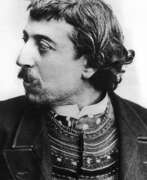

Paul Gauguin, a French artist born in Paris in 1848, is renowned for his significant contributions to Post-Impressionism, Primitivism, and Synthetism. Gauguin's art is distinguished by his experimental use of color and style, which set him apart from the traditional Impressionist movement.
Gauguin's early life was marked by a period in Peru, which influenced his artistic perspective. Initially, he pursued a career in stockbroking but soon turned to art, driven by financial necessity and a growing passion. His artistic journey began under the mentorship of Impressionist artist Camille Pissarro and through exposure to the works of other avant-garde artists.
The hallmark of Gauguin's work is his exploration of non-Western cultures, particularly during his time in Tahiti and the Marquesas Islands. This period saw the creation of some of his most famous works, including "Where Do We Come From? What Are We? Where Are We Going?" His paintings from this era, characterized by vivid colors and Symbolist themes, reflect a fusion of cultural influences and his quest for a "primitive" expression of spiritual and emotional states.
Despite his innovative style, Gauguin struggled with financial difficulties and health issues throughout his life. His work received little recognition during his lifetime, but posthumously, he gained acclaim for influencing modern artists like Pablo Picasso and Henri Matisse.
Today, Gauguin's works are celebrated in galleries and museums worldwide for their unique blend of cultural influences and artistic innovation. His enduring legacy is a testament to his unique vision and the profound impact he had on the art world.
Collectors and experts in art and antiques, stay updated on new product sales and auction events related to Paul Gauguin. Sign up now for exclusive updates and immerse yourself in the world of this visionary artist.


Ivan Generalić was a Croatian painter of the twentieth century, a representative of primitivism. He was the founder of the Hlebin school of naive art, which educated dozens of artists. Most of his paintings belong to the genre of everyday life, although his masterpieces include many allegories, landscapes and portraits, as well as works on historical themes.
Ivan Generalić belongs to the greatest primitivist artists of all time. Even during his lifetime, more than 70 of his solo exhibitions were held all over the world, and today the largest museums in Europe, Asia and America regularly organize retrospectives of Generalić's works.
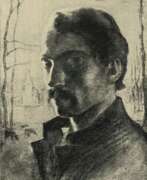

Robert Lvovich Genin (Russian: Роберт Львович Генин) was a Jewish-born artist of the first half of the twentieth century who worked in several countries, including the Russian Empire, Germany, France, Germany, Switzerland, and the USSR. He is known as a painter and graphic artist.
Robert Genin worked in a variety of genres including landscapes, portraits, genre compositions and nudes. He also did lithography, woodcuts and etching. His style evolved from Jugendstil and Symbolism in the early 1900s to Expressionism after the First World War. He later came to a kind of lyrical primitivism. The artist worked in both easel and monumental painting and was influenced by various artists.


Madge Gill was a British artist.
Gill was born into a large family and was raised in poverty. She suffered from various health problems throughout her life, including blindness in one eye and later the loss of her son, which led her to experience bouts of depression.
Despite her challenging circumstances, Gill was a prolific artist, creating thousands of drawings and embroideries over the course of her life. Her work was often inspired by spiritualism and included intricate and highly detailed patterns and symbols.
Gill's work was first discovered by chance in 1963, two years after her death. Her work has since been exhibited in major galleries and museums around the world, including the Hayward Gallery in London and the American Folk Art Museum in New York City.
Today, Gill is considered an important figure in the history of outsider art and is celebrated for her unique and distinctive style. Her work continues to inspire and captivate art lovers and collectors around the world.
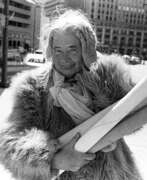

Lee Godie (born Jamot Emily Godee) was an American self-taught artist who was active in Chicago during the late 1960s until around the early 1990s. She was a prolific artist who was known for her paintings and modified photos which are shown in galleries and museums such as the Hayward Gallery in London and the Smithsonian American Art Museum. She is often considered Chicago's most collected artist.
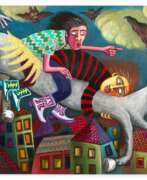

Oska Gutheil is a German painter. Oska Gutheil is regarded as a new star in the art world: galleries in metropolises such as New York, Berlin and Vienna are vying for the artist's pictures, who combine naïve painting with punk and comic elements. Oska Gutheil creates colourful, crazy worlds full of hybrid creatures – and with it his own biography.
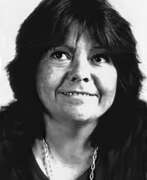

Judith Gutiérrez Moscoso was an Ecuadorian painter who lived and worked in Ecuador and Mexico. Along with other female artists, she formed part of the Guayaquil School for Contemporary Plastic Arts (Escuela de Guayaquil en las Artes Plásticas Contemporáneas) and was active in militant groups such as the Union of the Women of Guayas (Unión de Mujeres del Guayas), a precursor to Ecuadorian feminist organizations.

Hector Hyppolite was a Haitian painter. Considered as the "Grand Maître of Haitian Art".
Hyppolite, a prolific painter, typically depicted Vodou scenes and created between 250 and 600 paintings during the last three years of his life. Much of his work was influenced by his devotion to his work as a priest.
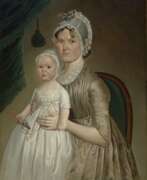

William Jennys was an American primitive portrait painter who was active from about 1790 to 1810. He traveled throughout New England seeking commissions in rural areas and small towns.
His early works are characterized by broadly modeled faces with a minimum of costume detail and bare backgrounds. Both the costumes and backgrounds became more detailed as his career progressed.


William Henry Johnson was a twentieth-century American artist. He is known as a primitivist painter.
William Johnson began his artistic career with realism, but then turned to primitivism and expressionism. He became famous for his works in the folk African-American style.
Johnson was an activist in the Harlem Renaissance cultural movement led by leading African American writers and artists.
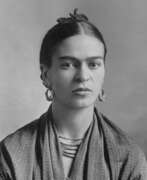

Frida Kahlo de Rivera was a Mexican painter, renowned for her captivating self-portraits that blend realism and fantasy. Born Magdalena Carmen Frida Kahlo y Calderón on July 6, 1907, in Coyoacán, Mexico City, she is celebrated for her profound exploration of identity, postcolonialism, gender, and class within Mexican society. Kahlo's works are a fusion of naïve folk art style and surreal elements, deeply influenced by Mexican popular culture and her personal experiences of chronic pain and disability.
Despite facing numerous challenges, including polio in her childhood and a catastrophic bus accident at 18, Kahlo's resilience and passion for art were undeterred. Her marriage to the famous Mexican artist Diego Rivera was both a romantic and artistic alliance. Kahlo's paintings, such as "The Two Fridas" (1939) and "Self-Portrait with Thorn Necklace and Hummingbird" (1940), are not only masterpieces of visual art but also compelling narratives of her life's trials and triumphs.
Kahlo's artistry extended beyond the canvas, as she was actively involved in the Mexican Communist Party, and her home, La Casa Azul, is now the Frida Kahlo Museum, a place of homage for her admirers. Although her work was not as widely recognized during her lifetime, Kahlo's legacy has grown tremendously, making her an icon for various social movements and a beacon in the art world.
For collectors and art experts, the journey into Kahlo's world is both a dive into Mexican cultural heritage and an exploration of the profound human experience. If you're passionate about Frida Kahlo's work and want to stay informed about related product sales and auction events, sign up for our updates. This is not just a subscription; it's an invitation to celebrate and own a piece of art history.


John Kane was an American painter celebrated for his skill in Naïve art.
He was the first self-taught American painter in the 20th century to be recognized by a museum. When, on his third attempt, his work was admitted to the 1927 Carnegie International Exhibition, he attracted considerable attention from the media, which initially suspected that his success was a prank. He inadvertently paved the way for other self-taught artists, from Grandma Moses to Outsider Art. Today Kane is remembered for his landscape paintings of industrial Pittsburgh, many of which are held by major museums such as the Museum of Modern Art, Carnegie Museum of Art, Whitney Museum of American Art, and the Metropolitan Museum of Art.
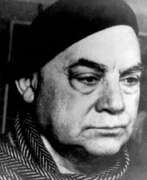

Iosif Artemievich Karalyan was a Soviet artist, member of the USSR Union of Artists and Honoured Artist of the Armenian SSR.
Karalyan's creative work is a kind of nostalgia for the country of childhood, which you can visit only in dreams and imagination, as it no longer exists, because childhood of every person, like his era, is unique, the unrepeatable sensations experienced, they are preserved visually only in the fine arts.
His works are kept in the Museum of Modern Art (Yerevan), National Gallery of Armenia (Yerevan), State Tretyakov Gallery (Moscow), Museum of Oriental Art (Moscow), home-museum of Hovhannes Tumanyan (Yerevan), the funds of the Ministry of Culture of Armenia and numerous private collections in Armenia and abroad.
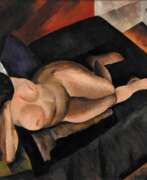

Moïse Kisling was a Polish-born French painter renowned for his contributions to modern art, particularly his highly stylized and evocative portraits. Born in Kraków in 1891, Kisling moved to Paris at the age of 19, quickly immersing himself in the vibrant artistic community of Montmartre and Montparnasse. His work, characterized by bold colors and dynamic compositions, spans a variety of themes, including landscapes, still lifes, and nudes, reflecting influences from Cubism and Post-Impressionism.
Kisling's artistry is celebrated for its unique blend of realism and abstraction, marked by a fluid, colorful style that evolved from his early influences, including Cezanne and Cubism. He was a central figure in the School of Paris, engaging with contemporaries such as Pablo Picasso, Georges Braque, and Amedeo Modigliani, the latter of whom he shared a close friendship and mutual artistic admiration. Modigliani's portraits of Kisling underscore their deep personal and professional bond. Notable works by Kisling include "La Sieste à Saint-Tropez," "Portrait du peintre (Autoportrait)," and "Le pêcheur," showcasing his versatility and skill in capturing the essence of his subjects.
During World War II, Kisling's Jewish heritage forced him to flee to the United States, where he continued to exhibit his work in New York City and California before returning to France after the war. His legacy is preserved in numerous public collections, including the Metropolitan Museum of Art, the National Gallery of Art, and the Brooklyn Museum, among others. This wide recognition attests to his significant impact on the development of modern art.
For collectors and experts in art and antiques, Kisling's work represents a pivotal intersection of cultural and artistic movements of the early 20th century. His paintings are not only visually stunning but also historically significant, embodying the spirit of an era marked by innovation and experimentation. The Musée du Petit Palais in Geneva holds a large collection of his works, offering a comprehensive overview of his artistic journey.
We invite enthusiasts and collectors to stay updated on new discoveries, sales, and auction events related to Moïse Kisling's work. Subscribing to updates ensures you won't miss the opportunity to engage with the rich legacy of this remarkable artist. This subscription is a gateway to exploring the vibrant world of Kisling's art, from his captivating portraits to his lush landscapes and still lifes, all of which continue to enchant and inspire.


Boris Nikolaevich Koshelokhov, known in artistic St. Petersburg under the nickname Bob, was a Soviet and Russian avant-garde artist.
Boris Koshelokhov was the organiser of a group of non-conformist artists called "Letopis", which represented an extremely heterogeneous spectrum of directions: from extreme expressionism to primitivism.


Nikifor Krynicki, born as Epifaniy Drovnyak, was a Lemko naïve painter. Nikifor painted over 40,000 pictures – on sheets of paper, pages of notebooks, cigarette cartons, and even on scraps of paper glued together. The topics of his art include self-portraits and panoramas of Krynica, with its spas and Orthodox and Catholic churches. Underestimated for most of his life, in his late days he became famous as a naïve painter.
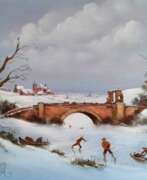

Jean-Marie Lamare is a Flemish primitive painter of today, a rare master of tempera. This technique inherited from the great Flemish Masters surprises with its particular luminosity. The compositions of J. M. Lamare transport us to a fantastic world.
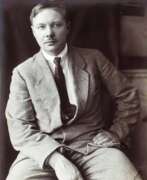

Mikhail Fyodorovich Larionov (Russian: Михаил Фёдорович Ларионов) was a distinguished Russian avant-garde artist, painter, and founder of the Rayonism movement, whose contributions significantly influenced early 20th-century modern art. Born in Tiraspol, then part of the Russian Empire, Larionov's pioneering spirit in both painting and stage design left an indelible mark on the realms of culture and art. His dedication to exploring new artistic techniques and expressions made him a central figure among Russian artists, pushing the boundaries of traditional painting and engaging in innovative artistic dialogues.
Larionov's artistry was not confined to a single genre; he was instrumental in the development of Russian avant-garde art, exploring and contributing to various movements such as Neo-Primitivism before founding Rayonism. This movement, which he developed alongside Natalia Goncharova, his lifelong partner and fellow artist, sought to express the dynamic interplay of light and color, breaking away from the conventional forms and perspectives of the time. Larionov's work in this area highlighted his belief in the power of abstract forms and the potential of art to capture the energy and rhythm of modern life.
His contributions are celebrated in major museums and galleries worldwide, with his works being pivotal in understanding the evolution of modern art. Notable works by Larionov are held in prestigious institutions such as the Russian Museum in St. Petersburg, the Tretyakov Gallery in Moscow, and the Museum of Modern Art in New York, underscoring his international recognition and the lasting impact of his artistic innovations.
For collectors and experts in art and antiques, Mikhail Fyodorovich Larionov's legacy offers a rich field of study and appreciation. His works not only embody the innovative spirit of early 20th-century art but also represent a bridge between Russian cultural heritage and the broader currents of European modernism. To stay informed about new product sales and auction events related to Mikhail Fyodorovich Larionov, we invite you to sign up for updates. This subscription is a valuable resource for enthusiasts keen to explore the depth and diversity of Larionov's contributions to modern art.


Torborg Lindberg-Karlsson is a Swedish artist and sculptor.
She created wood-carved and painted sculptures depicting people in Nordic costumes, mostly from the Sami culture. She also carved church jewelry and utensils.
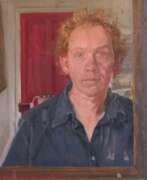

Frederick James Lloyd was an English artist. He became famous for his paintings, mostly of animals and country landscapes.
He was the first living self-taught artist to have a painting hung at the Tate in London, titled Cat and Mouse.
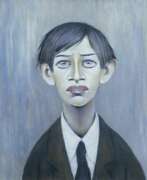

Laurence Stephen Lowry was an English artist. His drawings and paintings mainly depict Pendlebury, Lancashire (where he lived and worked for more than 40 years) as well as Salford and its vicinity.
Lowry is famous for painting scenes of life in the industrial districts of North West England in the mid-20th century. He developed a distinctive style of painting and is best known for his urban landscapes peopled with human figures, often referred to as "matchstick men". He painted mysterious unpopulated landscapes, brooding portraits and the unpublished "marionette" works, which were only found after his death.


Gilbert Lujan was an American sculptor and muralist. He is better known in professional circles under the pseudonym "Magu".
Magu's work became popular throughout the 1980s and 1990s for its use of colourful imagery, anthropomorphic animals, lowrider images of outrageously proportioned sizes, decorated with overlapping indigenous motifs (cities, graffiti), Dia De Los Muertos installations, altars and all manner of pop culture borrowings.
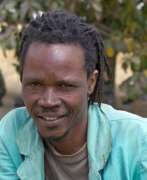

Wonder Luke is a Zimbabwean sculptor.
Like many artists in Zimbabwe, he was a simple laborer in the fields until he found himself on a sculptor's farm. Wonder Luke has found his unique style and creates human heads of various sizes, with soft and pleasing facial features and various emotions. His work is a great success among connoisseurs.
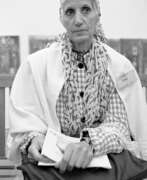

Baya Mahieddine (Arabic: باية محي الدين) or Fatima Haddad (Arabic: فاطمة حداد) was an Algerian artist who is best known for her vibrant and colorful paintings that often featured bold shapes and figures. At the age of sixteen Baya had her first exhibition, in Paris, where she gained notice from renowned artists such as Pablo Picasso and André Breton.
Baya's work is often associated with Surrealism, as she was heavily influenced by Breton and other Surrealist artists. However, she also drew inspiration from traditional Algerian art and culture, incorporating elements such as calligraphy and geometric patterns into her work.
Throughout her career, Baya's work was exhibited in Algeria and France, and she received widespread critical acclaim for her unique style and approach to painting. In addition to her paintings, she also created tapestries, ceramics, and other works of art.
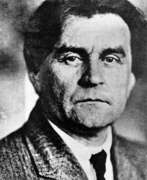

Kazimir Severinovich Malevich (Russian: Казимир Северинович Малевич) was a pioneering Russian artist, known for his profound influence on the development of abstract art in the 20th century. His nationality and specializations in painting, art theory, and teaching have cemented his place as a pivotal figure in the avant-garde movement, particularly for his role in founding the Suprematism movement. This movement, characterized by its focus on basic geometric shapes and a limited color palette, aimed to convey the supremacy of pure artistic feeling over the depiction of objects.
Malevich's art and theories have had a lasting impact on the course of modern art, challenging traditional perceptions of form and composition. His most famous work, "Black Square," epitomizes the essence of Suprematism. It represents a radical break from past art forms and a move towards abstraction, where the emotional and spiritual dimensions of art are prioritized. This piece, along with others like "White on White," has been exhibited in prestigious museums and galleries worldwide, showcasing Malevich's enduring legacy.
For collectors and experts in art and antiques, Malevich's works are not just paintings but are significant historical artifacts that embody a transformative period in art history. His contributions extend beyond his canvases, influencing sculpture, culture, and the broader artist school. His innovative approach to art has paved the way for future generations of artists, making his works highly sought after in the art and antique collecting community.
For those interested in the avant-garde movement and the evolution of abstract art, staying informed about Kazimir Malevich's contributions is essential. We invite you to sign up for updates related to Malevich, including notifications on new product sales and auction events. This subscription will keep you at the forefront of the latest discoveries and opportunities to acquire pieces connected to this revolutionary artist.


Salomon "Sal" Meijer was a Dutch painter, primarily known for his paintings of cats and Amsterdam city views. Works by Meijer are on view at the Jewish Historical Museum and the Kattenkabinet cat museum in Amsterdam, among others. In his youth, he worked in the diamond industry while studying art. He devoted himself full-time to painting in 1914. His first one-man exhibition was in 1926. Meijer's work was included in the 1939 exhibition and sale Onze Kunst van Heden (Our Art of Today) at the Rijksmuseum in Amsterdam. Due to the simplicity of Meijer's paintings and his modest attitude - he did not regard his paintings as works of art but as craftmanship - his work was often labeled as "naive" and "primitive". However, a re-evaluation of his work began in 1957 with the article by Kasper Niehuis.
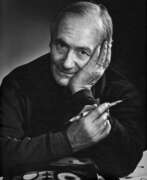

Joan Miró, a celebrated Spanish artist, was a master in painting, sculpture, and ceramics, renowned for his unique style that blurred the lines between Surrealism, Fauvism, and Expressionism. Born in Barcelona to a family of a goldsmith and a watchmaker, Miró grew up immersed in the rich cultural heritage of the Barri Gòtic neighborhood. His artistic journey began with drawing classes at the age of seven and continued at the prestigious La Llotja art academy. Despite an initial venture into the business world, Miró's passion for art prevailed, leading him to abandon his clerical career after a nervous breakdown.
Miró's work is noted for its exploration of the subconscious, often depicting a childlike perspective. This approach was both a critique of traditional painting methods and a means of expressing Catalan pride. His art, challenging to categorize, often featured symbolic elements and nationalistic qualities. One of his notable early works, "The Farm," reflects a transition to a more individual style, blending elements of his Catalan roots with broader artistic influences. This piece, later purchased by Ernest Hemingway, encapsulated the essence of Spain in its imagery.
In Paris, Miró joined the Surrealist movement in 1924, where his work began to reflect the influence of automatism, emphasizing spontaneous, automatic, or subconscious creation. He experimented with various mediums, including painting-poetry and collage, and even ventured into set and costume design for Sergei Diaghilev's Ballets Russes.
During World War II, Miró remained in Spain, and his work from this period, including the 22 Constellations series, reflected an interest in the night, music, and stars. His forms became increasingly abstracted, and he experimented with various techniques, often incorporating primary colors and evocative titles.
Miró's career spanned several decades, during which he continually evolved his style and explored new mediums. His contributions to art were recognized with numerous awards and retrospectives, including a major career retrospective at MoMA in 1941 and the Spanish Gold Medal for Fine Arts in 1980. Among his last major works was a tapestry for the World Trade Center in New York City, created in 1974.
For art collectors and enthusiasts, Joan Miró remains a figure of immense interest, not only for his distinct style and contributions to Surrealism but also for his ability to blend poetic imagery with political commentary. To stay updated on new product sales and auction events related to Joan Miró, sign up for our updates and immerse yourself in the world of this extraordinary artist.
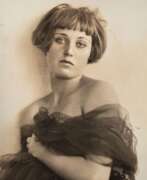

María del Carmen Mondragón Valseca, also known by her pen name Nahui Olin, was a Mexican artist, model and poet.
Carmen Mondragon was associated with the avant-garde movement, known for her unconventional lifestyle and outspoken nature. Her contributions to Mexican modernism and her role as muse to famous artists and writers further cemented her status as a cultural icon.
Nahua Olin's personal life and relationships were equally unconventional. She had affairs with famous artists, including Diego Rivera and Gerardo Murillo (Dr Atl), which influenced her artistic expression and worldview. Her exploration of love, desire and identity through her art and personal experiences has made her a symbol of female empowerment and sexual liberation.
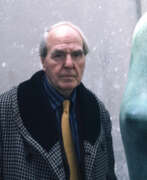

Henry Spencer Moore was an influential English sculptor and artist, renowned for his semi-abstract monumental bronze sculptures that have found homes around the world as public works of art. Born on July 30, 1898, in Castleford, Yorkshire, Moore showed early talent in art, but his journey towards becoming a sculptor was not straightforward. His experiences as a young teacher and a soldier in the First World War, where he was injured in a gas attack, significantly shaped his perspectives and artistic direction.
After the war, Moore pursued his passion for art, winning a scholarship to the Royal College of Art in London, where he began to experiment with modernist influences and direct carving techniques, moving away from the traditional Victorian style. His works, characterized by organic shapes and a blend of abstraction and figuration, were inspired by a wide range of sources, including primitive art, the human body, and the natural world.
Moore's sculptures are celebrated for their unique ability to blend form with space in the landscape, offering viewers a dynamic interaction with his works. His dedication to public art made his sculptures accessible to a wide audience, contributing to his status as one of the 20th century's most significant sculptors. Moore's legacy is preserved through the Henry Moore Foundation, which supports artists and promotes public appreciation of sculpture.
For collectors and experts in art and antiques, Moore's work remains a testament to the power of sculpture to evoke emotion and thought. His contributions to modern art and sculpture continue to inspire and influence artists around the world.
To stay informed about new exhibitions and opportunities to view Henry Spencer Moore's work, sign up for updates. This subscription will ensure you are alerted to new product sales and auction events related to Moore's influential body of work.
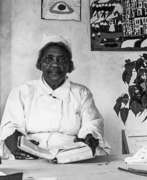

Sister Gertrude Morgan was a self-taught African-American artist, musician, poet and preacher. Sister Morgan achieved critical acclaim during her lifetime for her folk art paintings. Her work has been included in many groundbreaking exhibitions of visionary and folk art from the 1970s onwards.
Similar to other self-taught artists, Sister Morgan used simple forms to depict the human figure. Her works are characterized by their lack of the use of formal techniques such as perspective and definition of light and shadow, giving them a flat, two dimensional quality. She painted and drew using acrylics, tempera, ballpoint pen, watercolors, crayon, colored and lead pencils and felt tip markers. Using inexpensive materials she had at hand, Sister Morgan painted on paper, toilet rolls, plastic pitchers, paper megaphones, scrap wood, lampshades, paper fans and styrofoam trays. The fact that she was self-taught, coupled with her choice of materials as well as her style and subject matter have led her to be characterized as a naive, folk, visionary, vernacular and outsider artist.
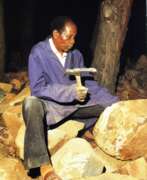

Henry Munyaradzi, known simply as Henry, is a self-taught Zimbabwean sculptor, a representative of "shona sculpture.
Before he got his hands on an instrument, Henry was a common laborer and never attended school. His sculptural work combines the simplicity of the primitive with stylized sophistication. He has great respect for the stone he uses and is often inspired by the original form. Henry has achieved outstanding success internationally, holding individual and group exhibitions around the world.
